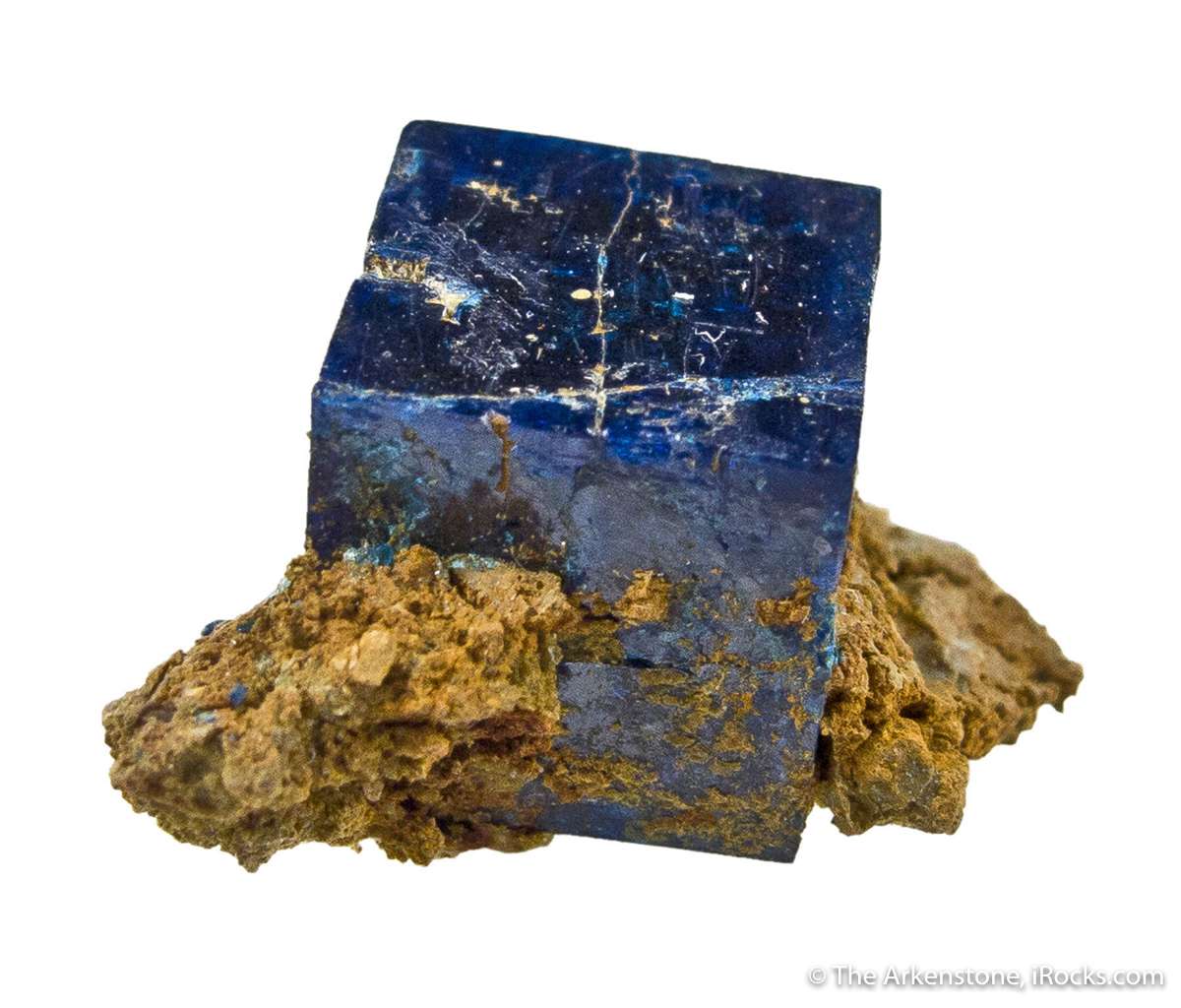The Mineral boleite

Boleite is a highly attractive, though uncommon, blue mineral that forms in very distinct crystal habits. Its crystals can be perfectly cubic, both in individual isolated crystals, and may be perched on fragile
matrix. Boleite may also form together with the minerals
Pseudoboleite and
Cumengeite as
epitaxial overgrowths, in mineralogically fascinating examples. These similar minerals form together in a single specimen with an inner
cubic core of Boleite, and outer protruding portions either Pseudoboleite (additional protruding square faces) or Cumengeite (triangular faces in a star-like formation.)
Boleite has been found in several localities worldwide, however, its only significant source was the the Amelia Mine in Baja California, Mexico. To date, this is the only only locality that had produced this mineral in large, well-formed crystals, as well as the uncommon epitaxial overgrowths.
The
matrix of Boleite crystals is often
friable and can crumble. Matrix specimens are often stabilized with glue to prevent their crumbling. Boleite is named after its
type locality at Boleo, Baja California, Mexico.
Chemical Formula
KPb26Ag9Cu24Cl62(OH)48
Color
Bright indigo blue to dark inky blue, greenish blue
Properties
Streak
Light greenish blue |
Hardness
3 - 3.5 |
Transparency
Translucent |
Specific Gravity
5 |
Luster
Vitreous, greasy |
Cleavage
1,1;2,1 |
Fracture
Uneven |
Tenacity
Brittle |
Crystal Habits
Most often as cubic crystals, which can be perfectly shaped. Crystals may have modified octahedral faces or corners. Also in intergrown cubic crystals, and in clusters of cubic crystals. Epitaxial overgrowths of pyramidal Cumengeite on Boleite crystal faces form 6-sided star-shaped crystal formations which may resemble a Star of David. Epitaxial overgrowths of cubic Pseudoboleite on Boleite crystal faces form a cube with protruding rectangular faces on each of the six sides.
Additional Information
Composition
Hydroxychloride of potassium, lead, silver and copper |
In Group
Halides |
Striking Features
Unique color, crystal habit, and mode off occurrence |
Environment
In the oxidation zone deposits of copper and lead. |
Rock Type
Sedimentary |
Varieties
-
Mixture of Boleite and Pseudoboleite, with the outer protruding portions of a cube as Pseudoboleite, and the inner core Boleite.
Uses
Boleite is a minor ore of copper at copper deposits. Its main use is a rare collectors mineral, with good crystals being highly valuable.
Noteworthy Localities
The premier locality for Boleite, which is also the
type locality, is the Amelia mine, Santa Rosalia (Boleo), Baja California Sur, Mexico. This is the only area where Boleite occurs as relatively large crystals.
Boleite localities where it forms in
microcrystals include the Lavrion District, Attikí Prefecture, Greece; the San Francisco Mine, Caracoles, Antofagasta Region, Chile; Challacollo, El Tamarugal Province, Chile; the Mammoth-Saint Anthony Mine, Tiger, Pinal Co., Arizona; and the Rowley Mine, Theba, Maricopa Co., Arizona.
Common Mineral Associations
Diaboleite, Pseudoboleite, Cumengeite, Anglesite, Cerussite, Atacamite, Phosgenite, Leadhillite
Distingushing Similar Minerals
Benitoite - Different crystal, do not occur in the same locality.